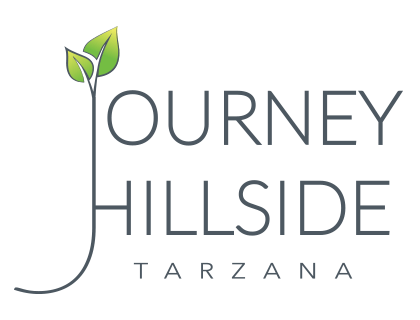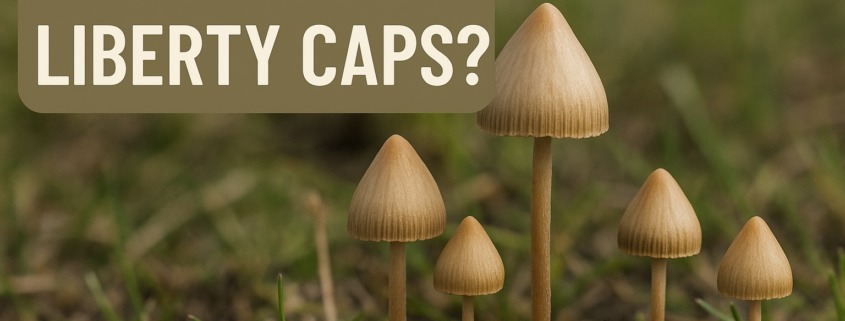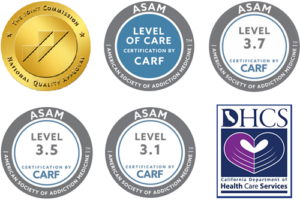What Are Liberty Caps?
Understanding Liberty Caps and Their Effects
Liberty caps, scientifically known as Psilocybe semilanceata, are among the most potent naturally occurring psychedelic mushrooms found in nature. These small, distinctive mushrooms contain high concentrations of psilocybin and psilocin—compounds that cause powerful hallucinogenic effects when consumed. While some people seek out liberty caps for their psychoactive properties, the use of these mushrooms carries significant physical, psychological, and legal risks.
Native to temperate regions across the Northern Hemisphere, liberty caps grow primarily in grasslands and pastures throughout Europe, North America, and parts of Asia. Their bell-shaped caps, typically measuring between 5 to 25 millimeters in diameter, have earned them their common name due to their resemblance to the Phrygian cap—a symbol of liberty during the French Revolution. Despite their small size, liberty caps pack a potent punch, containing some of the highest concentrations of psilocybin among all psychedelic mushroom species, according to research published by the National Institutes of Health.
The consumption of liberty caps and other psilocybin-containing mushrooms has grown in recent years, particularly among young adults seeking alternative consciousness experiences. However, what many users fail to recognize is that these substances can trigger serious adverse reactions, contribute to dual diagnosis conditions, and, in some cases, lead to patterns of problematic use that require professional intervention.
Identifying Liberty Cap Mushrooms
Liberty caps possess several distinctive characteristics that help distinguish them from other mushroom species, though proper identification requires expertise and caution. The cap of Psilocybe semilanceata features a prominen,t pointed or conical shape with a small nipple-like protrusion at the peak. When fresh, the cap displays a pale brown to yellowish-brown color that becomes more golden or yellowish as it dries.
The mushroom’s stem is typically slender, measuring 4 to 10 centimeters in length, with a cream to pale brown coloration. A key identifying feature is the tendency for liberty caps to bruise blue or blue-green when handled or damaged—a characteristic shared by many psilocybin-containing mushrooms. The gills underneath the cap are initially pale but darken to a purple-brown or black color as the mushroom matures and releases spores.
Liberty caps typically fruit from late summer through early winter, appearing in fields, meadows, and grassy areas that have not been fertilized with artificial chemicals. They show a preference for acidic soils and are commonly found growing in the same locations year after year. However, attempting to forage for liberty caps is extremely dangerous, as numerous toxic mushroom species can appear similar to the untrained eye. The U.S. Food and Drug Administration warns that misidentification can result in severe poisoning or death.
How Liberty Caps Affect the Brain and Body
When consumed, the psilocybin in liberty caps is converted by the body into psilocin, which interacts with serotonin receptors in the brain, particularly the 5-HT2A receptor. This interaction disrupts normal brain communication patterns and can produce profound alterations in perception, mood, and cognition, according to research from the National Institute on Drug Abuse. Effects typically begin within 20 to 40 minutes of ingestion and can last between 4 to 6 hours, though some residual effects may persist longer.
The psychoactive effects of liberty caps vary considerably based on dosage, individual physiology, mental state, and environmental factors. Common experiences include:
Perceptual changes: Users report visual distortions such as intensified colors, geometric patterns, trails following moving objects, and objects appearing to breathe or morph. Auditory hallucinations and synesthesia (crossing of sensory experiences) may also occur.
Emotional alterations: Liberty caps can produce a wide range of emotional responses, from euphoria and feelings of interconnectedness to anxiety, paranoia, and overwhelming fear. Mood can shift rapidly and unpredictably during the experience.
Cognitive effects: Users often describe altered thought patterns, difficulty concentrating, time distortion, and a sense of profound insights or revelations. However, these perceived insights rarely translate into meaningful or accurate understandings once the effects subside.
Physical symptoms: Common physical effects include dilated pupils, increased heart rate and blood pressure, nausea, muscle weakness, lack of coordination, and changes in body temperature regulation.
The intensity of these effects makes liberty caps particularly dangerous for individuals with underlying mental health conditions, as psilocybin can trigger or worsen symptoms of anxiety disorders, depression, and psychotic conditions.
The Dangers and Risks of Liberty Cap Use
While proponents of psychedelic substances often minimize the risks associated with psilocybin mushrooms, the reality is that liberty cap consumption carries significant potential for harm. The Substance Abuse and Mental Health Services Administration (SAMHSA) emphasizes understanding these dangers for anyone considering use or concerned about a loved one’s mushroom consumption.
Psychological risks represent some of the most serious concerns with liberty cap use. “Bad trips”—intensely frightening or disturbing experiences—can occur unpredictably and may involve terrifying hallucinations, extreme paranoia, panic attacks, and feelings of losing one’s mind or dying. These experiences can be psychologically traumatic and may trigger lasting anxiety or post-traumatic stress symptoms.
For individuals with personal or family histories of mental health disorders, particularly schizophrenia and other psychotic conditions, psilocybin use can precipitate serious psychiatric episodes. Research published in JAMA Psychiatry has documented cases where psychedelic use triggered the onset of persistent psychotic disorders in vulnerable individuals. Even in those without predisposing factors, repeated use of liberty caps has been associated with Hallucinogen Persisting Perception Disorder (HPPD), a condition characterized by spontaneous recurring visual disturbances similar to those experienced during intoxication.
Physical dangers should not be overlooked either. The disorientation and impaired judgment caused by liberty caps significantly increase the risk of accidents and injuries. Users may engage in dangerous behaviors, fail to recognize hazards, or experience difficulty navigating their environment safely. The nausea and vomiting commonly associated with psilocybin ingestion can lead to dehydration and, in rare cases, aspiration.
Additionally, the risk of mushroom misidentification poses a life-threatening danger. The Centers for Disease Control and Prevention (CDC) reports that numerous poisonous mushroom species grow in similar environments to liberty caps, and consuming the wrong species can result in severe liver damage, kidney failure, or death. Even experienced foragers can make fatal mistakes when identifying wild mushrooms.
Unpredictable reactions and interactions further compound the risks. The effects of liberty caps can be influenced by numerous factors, including dosage (which is difficult to determine with wild mushrooms), individual brain chemistry, concurrent use of other substances, and mental state at the time of ingestion. Psilocybin can also interact dangerously with certain medications, particularly antidepressants and other psychiatric drugs.
Liberty Caps and the Law
In the United States, psilocybin and psilocin are classified as Schedule I controlled substances under the Controlled Substances Act, as enforced by the U.S. Drug Enforcement Administration (DEA). This classification indicates that these compounds are considered to have a high potential for abuse, no currently accepted medical use, and a lack of accepted safety for use under medical supervision. Consequently, the possession, sale, or cultivation of liberty caps and other psilocybin-containing mushrooms is illegal under federal law.
Penalties for psilocybin-related offenses can be severe, potentially including significant fines and imprisonment. The specific consequences vary based on factors such as the quantity involved, whether the offense involved distribution or sale, and the individual’s criminal history. Many states have additional laws regarding psilocybin mushrooms, and penalties can vary considerably by jurisdiction.
Recent years have seen some localities and states reconsider their approach to psilocybin, with a few areas decriminalizing possession or establishing exceptions for therapeutic or research contexts. However, these changes remain limited, and psilocybin remains illegal in the vast majority of jurisdictions. Regardless of local policy changes, federal law continues to prohibit psilocybin, which can create legal complications even in areas that have decriminalized the substance.
The legal risks associated with liberty caps extend beyond criminal penalties. A drug-related conviction can impact employment opportunities, educational prospects, professional licensing, housing applications, and numerous other aspects of life. For individuals struggling with problematic mushroom use, the fear of legal consequences can sometimes prevent them from seeking the help they need.
Signs of Problematic Mushroom Use
While psilocybin is not considered to produce the same type of physical dependence as substances like alcohol or opioids, patterns of problematic use can develop. According to NIDA research on hallucinogens, some individuals find themselves repeatedly using liberty caps or other psychedelics despite negative consequences, indicating a psychological pattern of dependence that warrants professional attention.
Warning signs that mushroom use may be becoming problematic include:
- Using psychedelics more frequently or in larger amounts than intended
- Spending significant time obtaining, using, or recovering from mushroom experiences
- Continuing to use despite negative impacts on relationships, work, school, or other responsibilities
- Using mushrooms to cope with stress, anxiety, depression, or other emotional difficulties
- Experiencing persistent psychological issues such as anxiety, paranoia, or mood disturbances related to use
- Neglecting activities and interests that were previously important
- Using in dangerous situations or combining with other substances
- Feeling unable to enjoy life or social situations without psychedelic use
For individuals experiencing these patterns, professional support can provide the tools and strategies needed to address the underlying issues driving the behavior and develop healthier coping mechanisms.
Treatment Options for Psychedelic Substance Use
If you or someone you care about is struggling with problematic use of liberty caps or other psychedelic substances, effective treatment is available. At Journey Hillside Tarzana, our comprehensive approach addresses not only the substance use itself but also any underlying mental health conditions, trauma, or life circumstances that may be contributing to the pattern of use.
Our residential treatment program provides a structured, supportive environment where clients can focus entirely on recovery without the distractions and triggers of everyday life. Through evidence-based therapies including cognitive-behavioral therapy (CBT), dialectical behavior therapy (DBT), and trauma-focused approaches, clients develop the insights and skills necessary for lasting change.
Many individuals who struggle with psychedelic use are also dealing with co-occurring mental health disorders such as depression, anxiety, or trauma-related conditions. Our dual diagnosis treatment approach ensures that all aspects of a person’s mental health receive appropriate attention, as addressing underlying psychiatric conditions is often essential for successful recovery, according to SAMHSA’s guidance on co-occurring disorders.
Treatment at our Tarzana facility includes:
- Individual therapy sessions that provide one-on-one support and allow for personalized exploration of the factors contributing to substance use
- Group therapy where clients connect with others facing similar challenges, share experiences, and learn from one another’s perspectives
- Family therapy to address relationship dynamics, improve communication, and build a stronger support network for recovery
- Holistic therapies, including mindfulness practices, yoga, and wellness activities that promote overall health and stress management
- Medication management, when appropriat,e to address co-occurring mental health conditions or support the recovery process
- Aftercare planning to ensure clients have the resources, strategies, and support systems in place to maintain their progress after completing our program
For those requiring medical support during early recovery, our detox program provides 24/7 medical supervision in a safe, comfortable environment.

Finding Help for Psychedelic Substance Use
Taking the first step toward addressing problematic substance use requires courage, but you don’t have to navigate this journey alone. At Journey Hillside Tarzana, our experienced clinical team understands the unique challenges associated with psychedelic substance use and is dedicated to providing compassionate, individualized care in a private, luxurious setting.
Our exclusive six-bed facility in the serene hills of Los Angeles offers the privacy and tranquility conducive to healing, while our evidence-based treatment approaches provide the clinical excellence necessary for lasting recovery. Whether you’re struggling with frequent liberty cap use, experiencing persistent psychological effects from past psychedelic experiences, or concerned about a loved one’s mushroom consumption, our team is here to help.
Don’t let problematic substance use continue to impact your life, relationships, and future. Recovery is possible, and taking action today can set you on the path toward a healthier, more fulfilling life. For confidential support and information, you can also contact the SAMHSA National Helpline at 1-800-662-4357, available 24/7, 365 days a year.
Contact Journey Hillside Tarzana at (877) 414-1024 to speak confidentially with one of our admissions specialists and learn more about how our programs can support your recovery journey.
Key External Resources:
- National Institute on Drug Abuse (NIDA) – https://nida.nih.gov/research-topics/hallucinogens – Comprehensive research on hallucinogens and their effects
- SAMHSA National Helpline – https://www.samhsa.gov/find-help/national-helpline – 1-800-662-4357 (24/7 free and confidential treatment referral service)
- Drug Enforcement Administration – https://www.dea.gov/ – Information on controlled substances and legal status
- Centers for Disease Control and Prevention – https://www.cdc.gov/ – Health and safety information
- PubMed Central – https://pubmed.ncbi.nlm.nih.gov/ – Peer-reviewed research on psilocybin effects
- JAMA Psychiatry – https://jamanetwork.com/journals/jamapsychiatry – Clinical research on psychiatric effects





